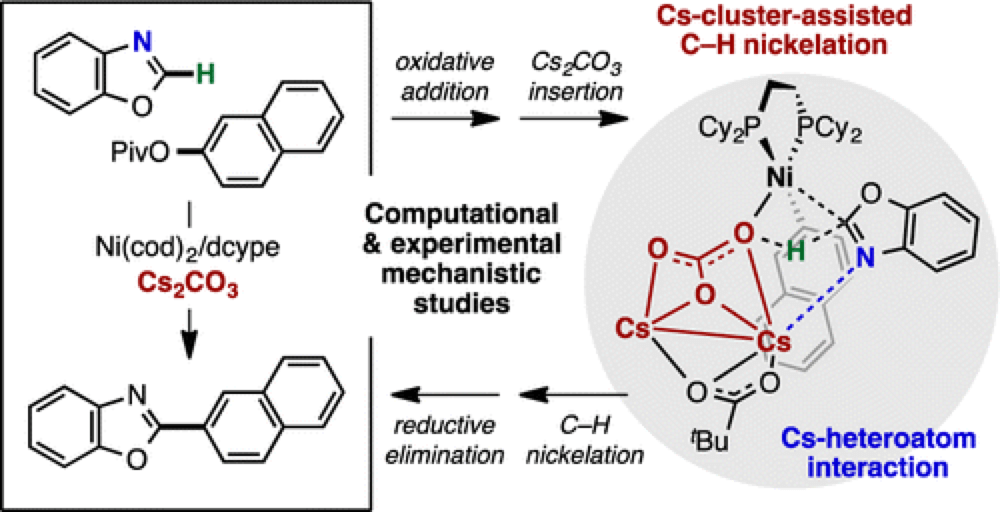Key Mechanistic Features of Ni-Catalyzed C–H/C–O Biaryl Coupling of Azoles and Naphthalen-2-yl Pivalates
Huiying Xu, Kei Muto, Junichiro Yamaguchi, Cunyuan Zhao, Kenichiro Itami, and Djamaladdin G. Musaev
J. Am. Chem. Soc.,
2014, 136, (42), 14834-14844; 10.1021/ja5071174

09/2014
The Musaev group, from Emory University, and Itami group, from the University of Nagoya, part of the Institute for bio-Transformative Molecules, collaborated on a project to gain insight into the mechanistic details of the nickel-catalyzed C–H/C–O biaryl coupling of azoles and naphthelen-2-yl pivalates.
This international collaboration is one only made possible through the CCHF’s participation in the Virtual Institute for C–H Functionalization (VICHF), that brings together researchers from across the globe to communicate and collaborate on C–H Functionalization challenges.
A key observation from this work was the critical impact the nature of the base had on the reaction. It was found that Cesium Carbonate was unique in its ability to promote this reaction. Through a combination of theoretical and experimental work a new explanation for this base effect was proposed, the addition of Cesium Carbonate to the reaction mixture triggers the formation of complex that chelates to the azole, increasing the acidity of the heterocycles C–H bond and significantly reducing the energy barrier to C–H functionalization.
This work offers a new way of thinking about the mechanism of this class of reaction, providing detailed information for the design of new catalysts and transformations.